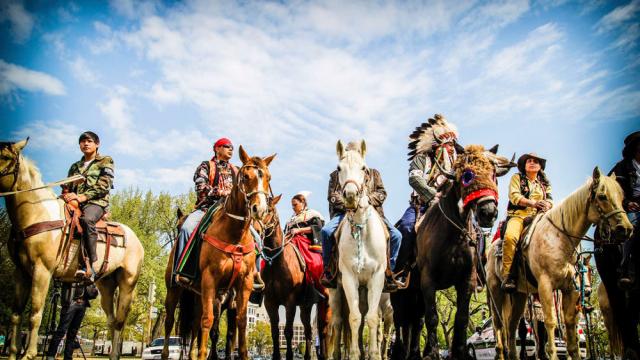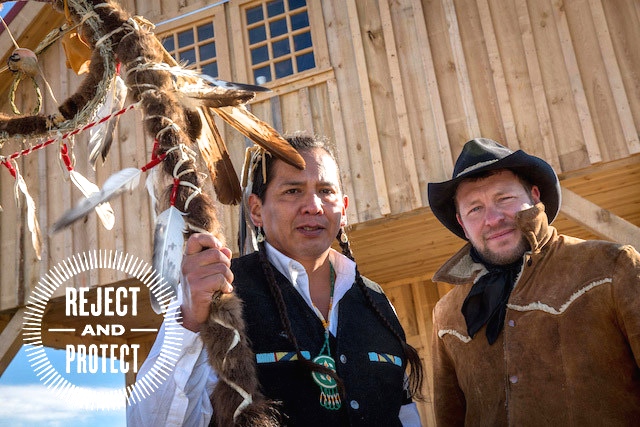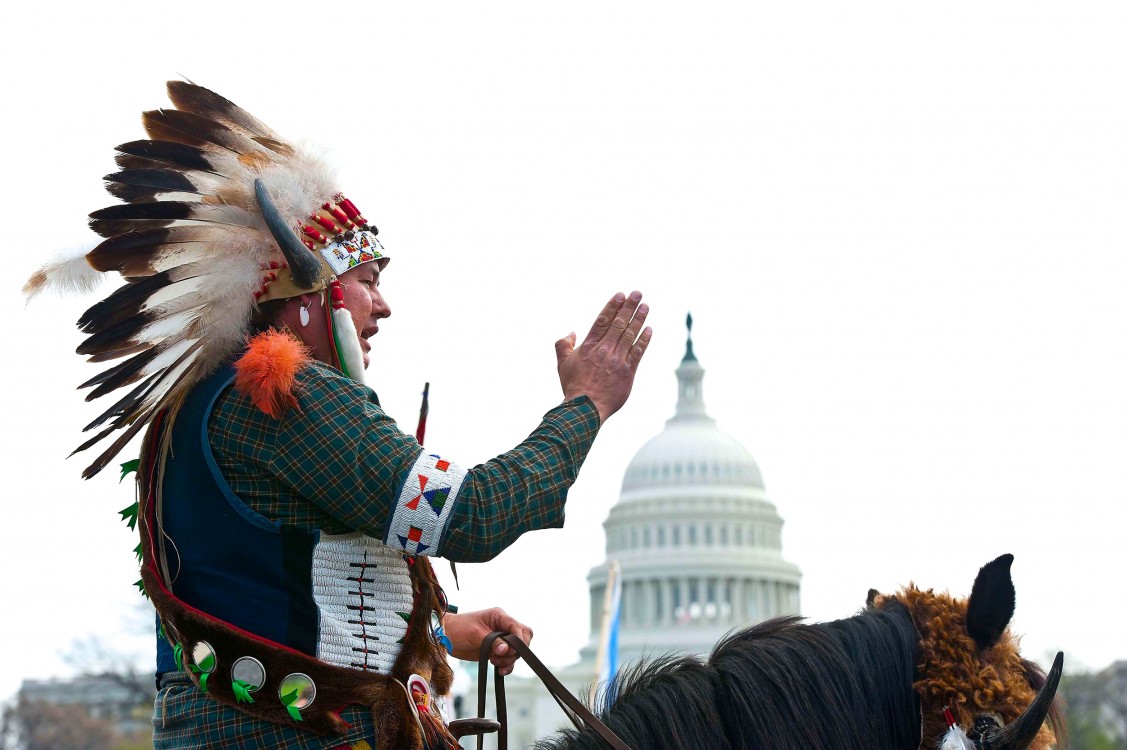
The Cowboy-Indian Alliance made waves in April when participants led a five-day "Reject and Protect" campaign in Washington, D.C., against the proposed Keystone XL pipeline. The action was prominent and gained notice in the media, although the origins of the alliance haven’t fully been bought to light – nor the historical importance of such an alliance.
Art Tanderup, a Nebraska farmer who has vocally protested against Keystone XL, stated in an April interview that the alliance formed several years ago due to the “common interests between farmers, ranchers and Native Americans in northern Nebraska and southern South Dakota."
"We’ve come together as brothers and sisters to fight this Keystone XL pipeline, because of the risk to the Ogallala Aquifer, to the land, to the health of the people,” he said. The pipeline is a threat to both communities, he added, as the Ogallala Aquifer – the country's largest underground water source, located beneath the Great Plains – not only provides water for 2.3 million people but also “threatens the Missouri River, which provides drinking water for probably a couple 'nother million,” bringing the total number whose water supply is threatened by construction of the pipeline to about 5 million people.
In addition, the aquifer provides water for animals, livestock and irrigation. All of this means that, contrary to oil industry claims, the pipeline in fact imperils the health and economic stability of the Midwest.
For the Rosebud Sioux Tribe and the Great Sioux Nation, there is also a historical significance to this battle. As Tanderup stated in the interview, part of the pipeline’s route, as well as his own farm, “is on the Ponca Trail of Tears from back in the 1870s, when Chief Standing Bear and his people were driven from the Niobrara area to Oklahoma.”
The extraction processes, such as tar sands mining and the refining and dilution processes used to obtain the oil, are extremely dangerous. Nez Perce activist Gary Dorr noted in the same interview that before the oil extraction started, Fort Chip in Canada had “a negligible cancer rate,” but now they “[have] a cancer rate 400 times the national Canadian per capita average. Every single family [in Fort Chip] has cancer in their families.”
Story of a Shared Struggle
While these concerns are significant due to their environmental and economic consequences, there is a historical importance in the alliance as well. The Cowboy-Indian Alliance isn’t actually all that new, but is rather “a later incarnation of an alliance that was first formed in 1987 to prevent a Honeywell weapons testing range in the Black Hills, one of the most sacred sites in Lakota cosmology – where, in the 1970s, alliances successfully fended off coal and uranium mining.” That is, the current movement is the continuation of a fight for the environment, and to protect people over profits, going back decades.
And at the same time, the Keystone XL pipeline conflict is impacting Native American and white relations in other ways. Take the story of Mekasi Horine, a member of the Ponca Tribe of Oklahoma who is a Native American rights and environmental activist. When he first heard about the Cowboy-Indian Alliance, Horine was rather skeptical.
“I’ve always been a little bit bitter toward white society,” he said, because “I’ve experienced a lot of racism—growing up on the res, living on the res. When I went to town I was always treated differently than others.”
However, Horine eventually joined the group opposing the pipeline due to his mother's convincing him that the alliance was an important step – and that the cowboys “have that love and respect for the land the same that we do.”
More deeply, many see the alliance having far-reaching effects that go beyond merely environmental concerns, as it “is beginning the dialogue not just about broken treaties, but about the long history of colonization, the effects of which are ongoing among some of the United States’ poorest populations.”
As Yes! Magazine wrote, both sides “hope that the pipeline, which has caused them both much distress, will be a catalyst for reconciliation,” and they “sense that the reconciliation has a historic importance, something healing for both settlers and natives—and both feel that it is, in some way, destined to happen.”
Does this mean that everything will be smooth sailing between Native Americans and the descendants of white settlers from here on out? Not in the slightest. But the Cowboy-Indian Alliance, as part of a broader nationwide opposition to the Keystone XL pipeline, offers hope that a new kind of reconciliation – and reckoning – is taking place that could change the views held by many, and undo some of the damage done to this land and its people over centuries of mistreatment and destruction.
3 WAYS TO SHOW YOUR SUPPORT
- Log in to post comments













